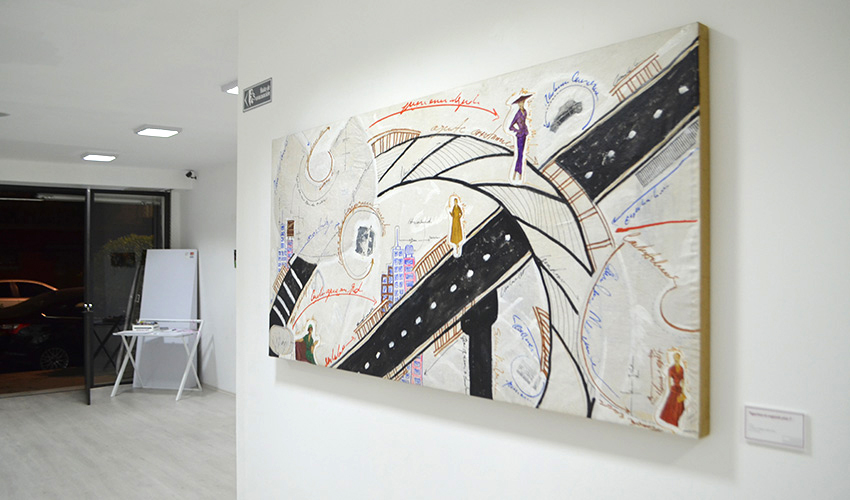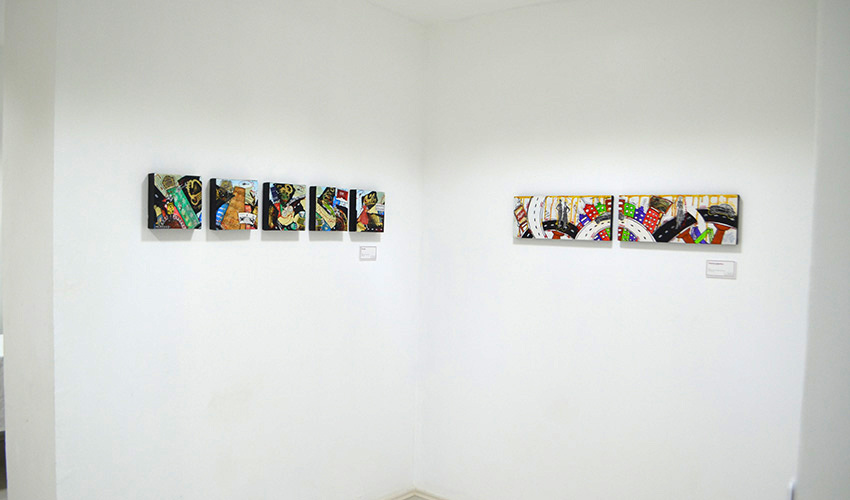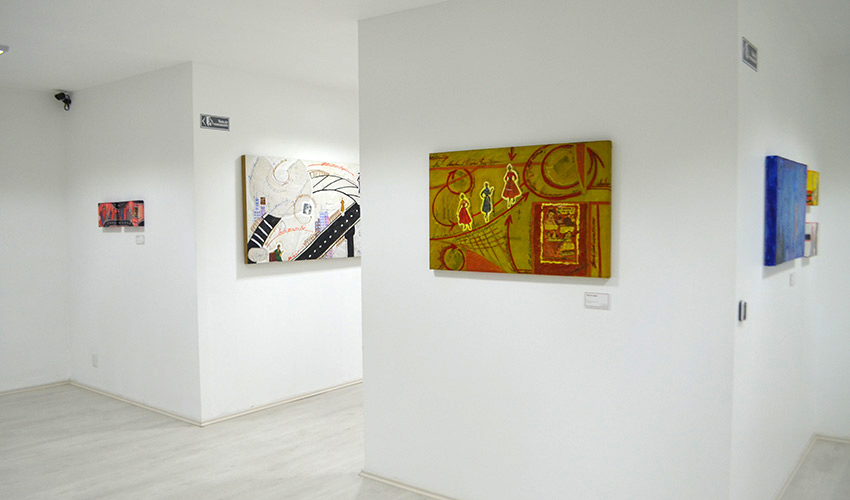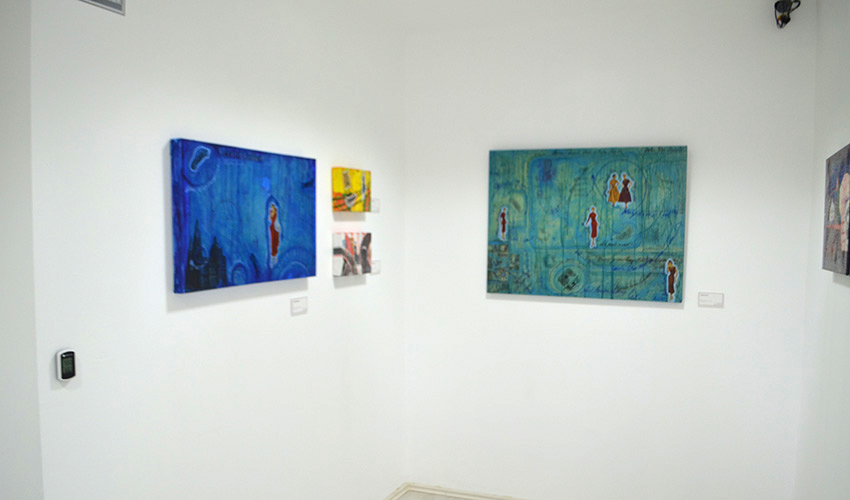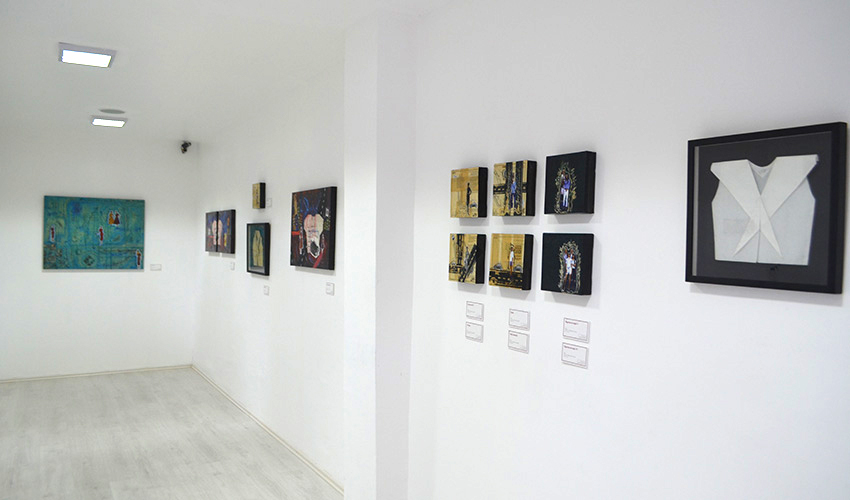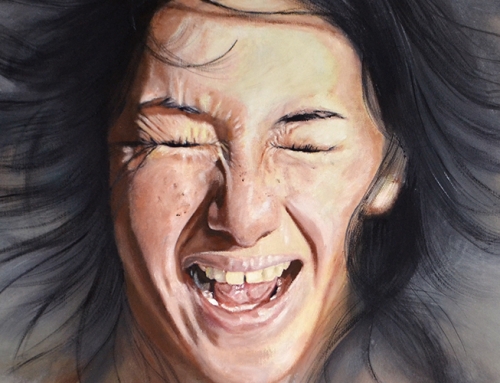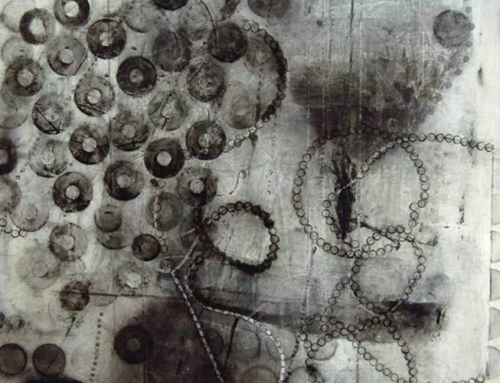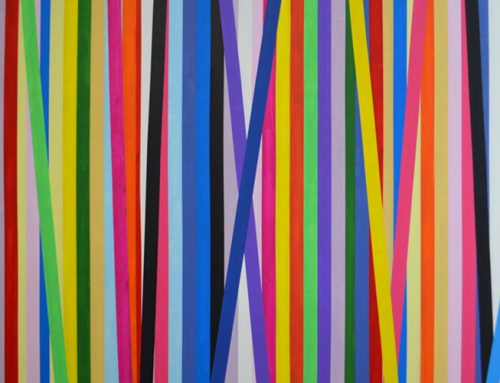Exhibition no. 6.- Front row. Solo show by Victor Mora, drawing. From Friday, November 27th, 2015 to Tuesday, January 5th, 2016.
With a semi-abstract character, the works that Victor Mora presents in Front row, discover his aesthetic goals and reveal his fascination for two seemingly opposite themes: the modern city and the 40’s fashion.
Deploying a frank and strong visual narrative, he presents on one side, a growing city which rapidly increase the construction of bridges, streets and second floors (this is the name given in Mexico City to the highways that cross over the city). And, on the other hand, a specific moment in the history of fashion, the 40’s decade. Together, the lead us to a single approach: Modernization.
From 1939, World War II, caused a tremendous impact on daily life, therefore it had direct influence in peoples’ clothes. The best materials were used for the war industry, the government confiscated al reserves of natural fibers so that force manufacturers to develop synthetic fibers, ie to modernize.
Perhaps it’s no coincidence, that the leitmotif that seems to jump off the artworks, alludes to the car that represent the higher technology in Germany during the war. It was Germany who dictates fashion in that period. And it was that modern VW beetle, the most sold car for almost three decades in our modern Mexico City.
We must also remember that during the 40’s, the German government appropriated and controlled the Haute couture en France. Perhaps that is why the artist reveals, almost like an obsession, a deconstruction of garments, discovering patterns to re-build them with delicacy as if they were part of French couture.
In these artworks, a variety of brief notes emerge from the canvas, they appear to seek a constant conversation with the viewer. Combined with woman silhouettes with striking costumes and winding streets, the paintings expose an underlying expectation: To look to the whole exhibition as if we were at the front row of a long urban runaway. When is presented in such a convincing way, it becomes a tribute to what it was, and is, the modernization of a city.
